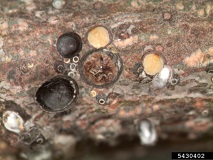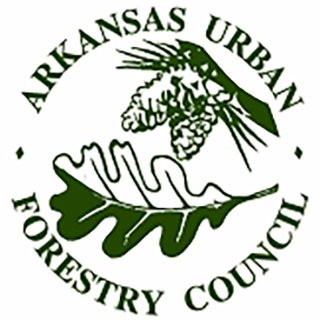Gloomy Scale
- At January 12, 2019
- By Julie Robbins
- In Uncategorized
 0
0

Gloomy scale (Melanaspis tenebricosa)is a native, armored scale insect that feeds on the bark, branches, and twigs of trees. The insect feeds on tree sap underneath waxy protective material that resemble convex lenses and are referred to as “tests”. Gloomy scale appears to be more abundant in urban than forested settings. A positive association of scale body size and population growth with warmer urban areas and higher cover of impervious surfaces has been reported. The scale distribution range is wide occurring throughout the southeastern United States from Florida to Maryland and west to Texas. The scale has one generation per year. Heavy infestations cause branch dieback and canopy thinning followed by tree death in most serious infestations.
Host: Most susceptible host is red maple (Acer rubrum) but other hosts include sugar maple (Acer saccharum), boxalder (Acer negundo), silver maple (Acer saccharinum), yellow poplar (Liriodendron tulipfera), elm (Ulmus spp.), and sweetgum (Liquidambar styraciflua).
Signs and Symptoms: Adult female covers, which are called tests, measure 2-3 mm in diameter and cover the bark of branches and twigs giving them a bumpy, warty look. The tests are dark gray to brown in color and are circular for females but more oval and smaller for males. Scale tests remain attached to the bark and are the best indicators for scale presence. Crawlers and nymphs can be observed during the summer, however. Mature females under tests are pink, wingless, and legless whereas males develop wings and legs but have a very limited life span.
Management: Red maple trees planted in areas surrounded by impervious surfaces such as roads, buildings, and parking lots would be at more risk of gloomy scale threat. Matching species to site in planting operations is best preventive measure. Cultural practices that improves water and nutrient resources for trees would reduce hazard potential. Low pressure water sprays during dormant season can be used to remove scales in light infestations, whereas chemical treatments with foliar insecticides and/or bark oil sprays may be needed in heavy infestations when cost to benefit of tree removal favor treatment.
by Mohammad Bataineh, Assistant Professor of Forest Health, Arkansas Forest Resources Center, (870) 460-1449, Bataineh@uamont.edu
Figure 1. Signs of gloomy scales tests on maple branches, from bugwood.org




